Civilizations have been using Bentonite clay for thousands of years. Today, this unique clay has become one of the hottest trends in health and wellness.
Even when you get past the hype, there’s a lot to like. Whether you’re looking for better skin or better health, keep reading to find out why this humble, all-natural product might be worth a try.
The History of Bentonite Clay
Even though Bentonite clay is trending in health and wellness communities, it’s far from a new phenomenon.
In need of a sugar detox?
Click here to get your FREE Sugar Detox Guide + Sugar-Free Recipes!
For thousands of years, cultures around the world have turned to this clay for its extensive benefits (including health and aesthetics). Geophagy (i.e., the deliberate, regular consumption of earthy minerals) was well-known in the ancient world; it was even mentioned by Aristotle (1). A popular method of geophagy involved dissolving little pieces of clay in water, then dipping food in it to prevent digestive problems. [tweet_quote] Bentonite clay has been used for thousands of years for skin and digestive health.[/tweet_quote]
So Bentonite clay’s recent explosion in popularity is more of a rediscovery than breaking new ground. As modern research catches up with ancient wisdom, it’s becoming more apparent just how useful this clay could be in our modern lives.
What Is Bentonite Clay?
Bentonite clay is made of weathered, volcanic ash. Because the clay is 100% natural, there’s very little to worry about, in terms of potential side effects. (More on them later.) This clay is found all over the world, but currently, the largest-known deposit is in Wyoming and Montana.
Fort Benton, MT, and the Benton Shale actually inspired the name of the clay. Geologist Wilbur C. Knight coined the term back in 1898 (2). Over the years, Bentonite has become a catch-all term for different types of absorbent, swelling clays made from weathered, volcanic ash—even if they’re harvested in other locations.
You might even hear this clay referred to as “Montmorillonite clay.” That name comes from a region in France, where the clay is also found. For all practical purposes, the terms Montmorillonite clay and Bentonite clay are interchangeable (3).
How Does Bentonite Clay Work?
Slathering clay on your skin—or even drinking it—actually kicks off a useful chemical process.
A lot of this process occurs at a molecular level. Bentonite clay contains mostly negative ions. Adding water causes Bentonite clay to expand, and allows it to absorb its dry mass. [tweet_quote] Bentonite clay works on a molecular level to rid the body of toxins.[/tweet_quote]
The result: the wet clay attracts heavy metals and other toxins, many of which carry a positive electrical charge (4, 5). The harmful stuff ends up bound to the clay, instead of your body. You then expel the toxins (along with the clay) through normal bowel movements.
This ability to attract dangerous toxins — and absorb them in a safe way — is the basis of Bentonite clay’s various health benefits.
The Benefits of Bentonite Clay
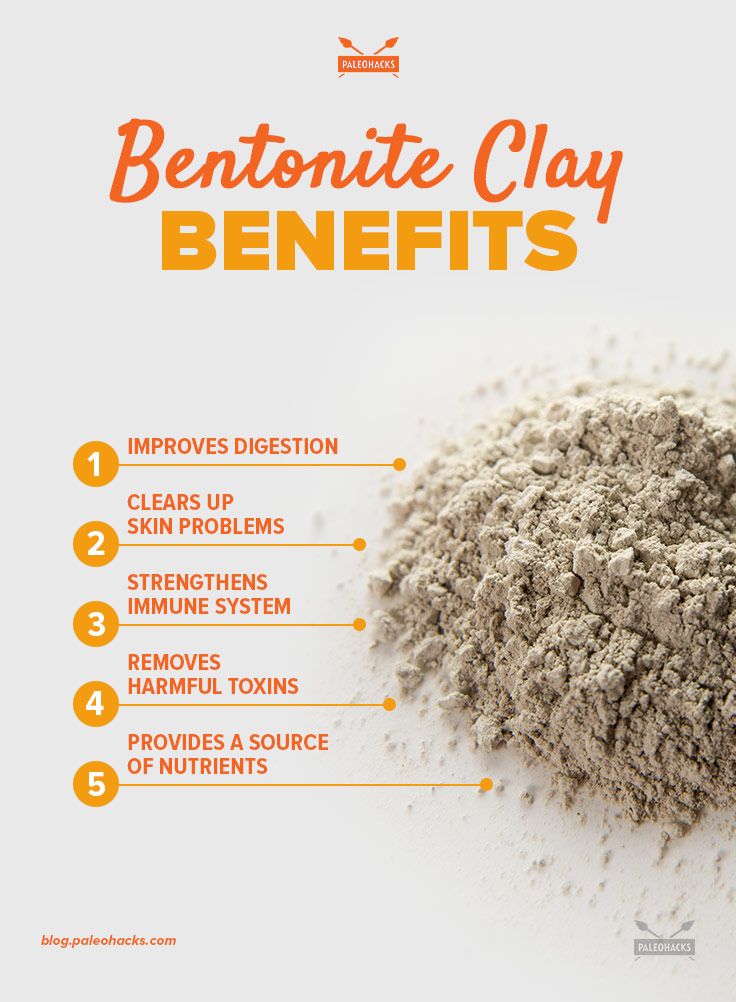
We know that various cultures have turned to Bentonite clay for thousands of years. Now it’s one of the hottest trends in health.
Let’s talk about why.
Here are some of the most impressive benefits that Bentonite clay produces:
1. Improves Digestion
Bentonite clay helps neutralize harmful bacteria, which can create digestive problems if left unchecked. Believe it or not, antacid compounds from clays are common ingredients in anti-nausea medicines (e.g., Rolaids and Maalox) (4).
Studies in mammals have found Bentonite clay to be very effective at adsorbing rotaviruses and coronaviruses. These viruses are the leading contributors of gastrointestinal problems (e.g., nausea and diarrhea) within the young animals of various mammalian species (5).
If you like to watch nature shows on TV, you’ve probably noticed how animals (e.g., deer, parrots, and elephants) seem to love eating dirt. When you consider that the instinctual reasons driving them to do it include better digestion, it makes a lot more sense (6)!
2. Clears Up Skin Problems
We already discussed how Bentonite clay binds to toxins when mixed with water. This effect makes it a smart choice to treat skin issues (e.g., eczema, dermatitis, and psoriasis). Applying the clay to your skin draws out the toxins in your pores; it heals the skin and provides a nice exfoliating effect. [tweet_quote] Use Bentonie clay to treat eczema, skin infections and other topical issues.[/tweet_quote]
Bentonite clay can even help heal skin infections like Buruli ulcer—a necrotizing (i.e., “flesh-eating”) infection caused by the bacteria Mycobacterium ulcerans. Remarkably, the clay may even work when prescription antibiotics fail (7).
Bentonite clay might offer cosmetic benefits as well. One animal study found that the clay helped improve collagen formation in mice within just 14 days (8). Collagen is a key protein for keeping your skin elastic and free of wrinkles. A human study found that the application of clay and jojoba oil reduced acne lesions by up to 54% within six weeks (9).
3. Strengthens the Immune System
Bentonite clay can even inhibit the growth of harmful bacteria, making for a stronger immune system.
One study concluded that Bentonite clay can provide an inexpensive treatment for numerous bacterial infections: Salmonella, E.coli, MRSA infections (i.e., antibiotic-resistant staph infections), and many others (10). Arizona State University researchers even found that, in some cases, the clay might be able to kill bacteria that are resistant to antibiotics—or that have no known therapeutic agents.
Plenty of more research needs to be done for us to completely understand how Bentonite clay’s antibacterial properties work—much less the full extent of their potential applications. But so far, the results have been very promising!
4. Removes Harmful Toxins
Bentonite clay is quite effective at removing toxins, which is important. Even if we stick to a healthy Paleo diet of organic, minimally processed foods, it’s impossible to avoid exposure to environmental toxins.
Bentonite clay can help. One of the biggest benefits comes from volatile organic compounds (VOCs), an assortment of chemicals that are emitted from paint, office equipment, cleaning supplies, building materials, and tons of other everyday items you can’t really avoid (11). Multiple studies have confirmed Bentonite clay’s ability to adsorb VOCs, which reduces our exposure to these harmful chemicals (12, 13).
The clay can also help remove toxic metals (e.g., mercury, cadmium, and lead) from our systems. Over time, these metals can accumulate from processed foods, low-quality drinking water, and your environment. One study focused on four heavy metals; it found that Bentonite clay significantly reduced all of them (14).
5. Provides a Good Source of Nutrients
Bentonite clay’s composition makes it a useful supplement in its own right—even if you overlook the other health benefits.
The regularly consumption of Bentonite clay can help you get the nutrients that so many people lack. It’s a rich source of minerals, including magnesium, calcium, sodium, copper, iron, silica, and potassium (15). A 2009 study in Tanzania (where clay is most often eaten by pregnant women) found that just 50 grams a day provided 99% of the recommended amount of manganese, 75% of copper, and 13% of iron (16).
Uses of Bentonite Clay

Here’s a rundown of some of the different ways you could try it:
“Spot Treat” Skin Conditions
You’re probably aware that people use Bentonite clay as a face mask. But the uses go far beyond that. You can also use the clay as a type of “spot treatment” for various skin problems.
All you have to do is take a dab of clay, mix it with an equal amount of water, and apply it to your problem spot. Let the clay dry (which takes about 20 minutes) before rinsing it off with water. People have used this treatment on things like:
- Blemishes
- Bug bites or stings
- Cuts
- Eczema
- Psoriasis
- Minor burns
If you have a more acute problem spot, you can even make a poultice (e.g., a soft, moist mass of material) out of Bentonite clay—by applying a thick layer of it directly on the wound, and wrapping the area with gauze or a cloth. Until you see improvement, change the poultice every few hours.
Bentonite Clay Mask
Face masks made of Bentonite clay are very popular at high-end spas, but there’s no reason why you can’t make them yourself—without throwing down big bucks for the spa experience! [tweet_quote] Save the expensive Bentonite clay spa treatment and make your own mask at home.[/tweet_quote]
The process is simple. Just use one part Bentonite clay and one part water to create your own paste; one tablespoon of each will usually do. Then rub onto your face, leave it on for 20 minutes or so, and rinse it off with warm water and a washcloth.
To exfoliate your skin, minimize blemishes, and maintain a youthful glow, you can apply the mask once a week.
Bentonite Clay Baths
Now here’s a luxury worth indulging! You can add some Bentonite clay to your next bath. Then you’ll create the same exfoliating effects as a clay mask—for your whole body, not just your face!
All you have to do is draw a bath, and add around ¼ cup of Bentonite clay. Soak for 20 or 30 minutes. Don’t worry if a few pieces of clay stick to your skin during your bath. You can rub them off with a wash cloth afterward.
Bentonite Clay Detox
The easiest way to ingest Bentonite clay is to simply mix half a teaspoon of it into a glass of water, and drink it down. Luckily, Bentonite clay is mostly odorless and tasteless.
Start slowly, and track the effects. You can try half a teaspoon for a while, see how you feel, and gradually work your way up to a full teaspoon per day. To make sure you mix the Bentonite clay well, it’s ideal to use a water bottle with a lid; then you can shake it up before drinking.
Some people have a Bentonite clay drink every day as a tonic for better health. Others prefer to only have one sporadically; they do a detox every few months. If you start ingesting a good deal of clay but aren’t used to it, you might experience a few detox symptoms (e.g., headaches and fatigue) as your body removes the toxins. So it’s best to start gradually, and see how your body reacts.
Where to Buy Bentonite Clay
Bentonite clay is inexpensive and easy to find. It’s widely available online and in health food stores. Because you mix the clay with water, even small amounts can go a long way.
The key thing to think about is how you intend to use your clay. Some clay is only designed for topical use, so it might not go through as rigorous of a process as clays intended for ingestion. If you plan to ingest Bentonite clay, confirm with the manufacturer that it’s food grade—and has gone through all the necessary safeguards.
Here are a few excellent brands, which have been selling quality bentonite clay for a while:
- Aztec Secret Indian Healing Clay (external use only)
- Mountain Rose Herbals
- Redmond Clay
Potential Side Effects of Bentonite Clay
Because Bentonite clay comes from the earth and is made from all-natural ingredients, the risk of any adverse effects is low.
Even mainstream food-safety organizations—which are often reluctant to give all-natural ingredients a fair shake—have endorsed Bentonite clay as a safe product. As a food additive, the FDA rates Bentonite clay as “generally regarded as safe” (17). The biggest potential danger is an elevated content of lead; this caused the FDA to issue warnings about the brands “Best Bentonite Clay” and “Bentonite Me Baby.”
Bentonite clay does naturally contain trace amounts of lead. There’s really nothing to worry about, though, as the lead content in typical bentonite clay is less than what’s found in foods we regularly eat (e.g., collard greens, sauerkraut, and sweet potatoes) (18). Stick to a reputable clay supplier, and if you have any concerns, ask questions before buying.
While Bentonite clay is completely safe for the vast majority of the population, children and pregnant women should avoid ingesting it. If you have any doubts, check with your doctor before you get started.
The Bottom Line
There’s plenty to love in the modern world. There’s also plenty to gain from going back to your roots. Time-tested, all-natural remedies might just be what you need to get a little healthier.
Bentonite clay is a newer trend in a long line of health “rediscoveries.” But as scientific research continues to confirm the benefits, it just might be one worth embracing.
Have you used Bentonite clay? If so, how do you use it? What effects have you noticed? Leave a comment below, and share your experience!
(Read This Next: Why Eating Dirt Can Heal a Leaky Gut)


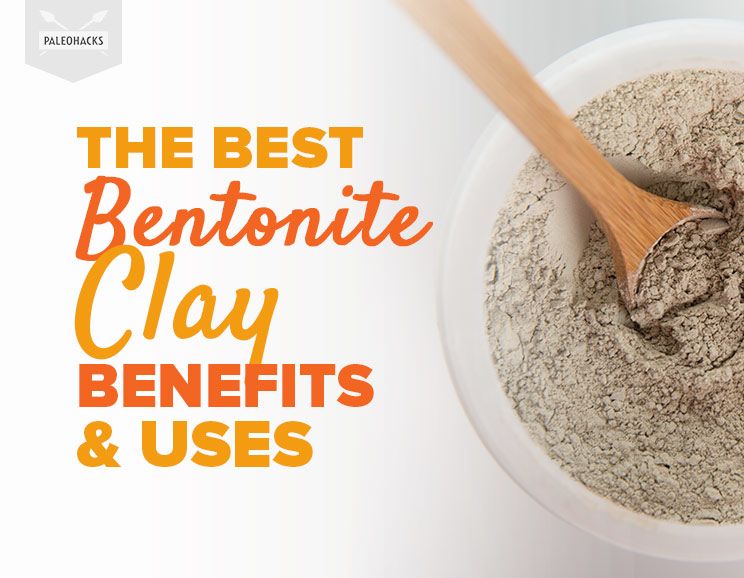
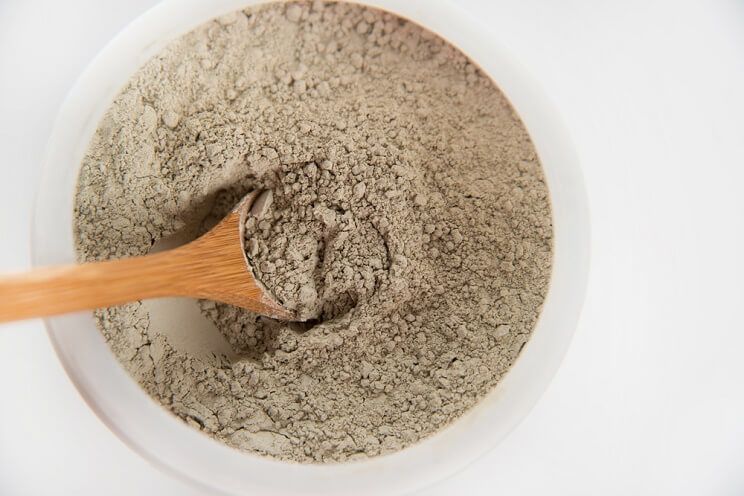
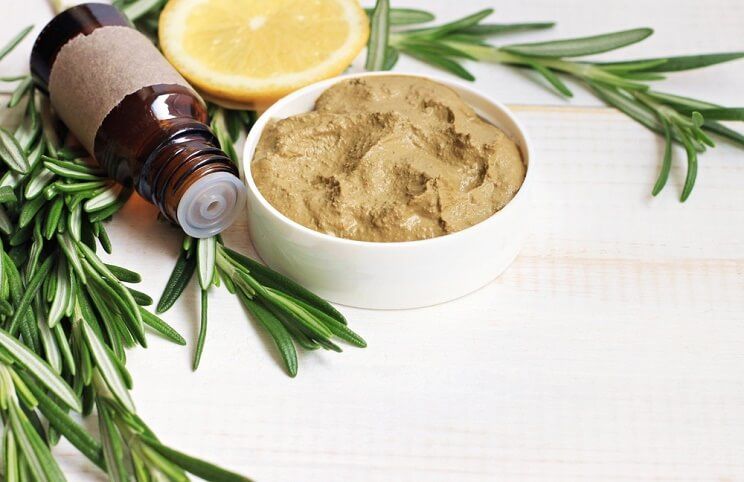
 Raw vs Cooked: Which Vegetables Are Healthier for You?
Raw vs Cooked: Which Vegetables Are Healthier for You?
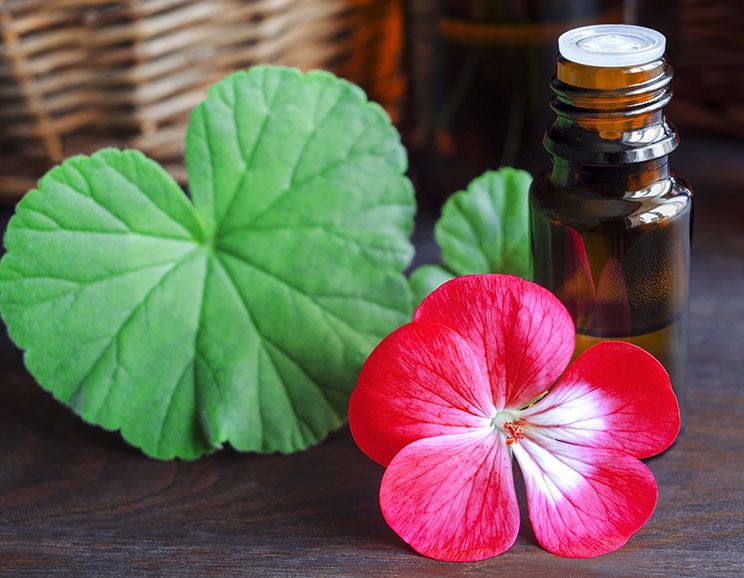
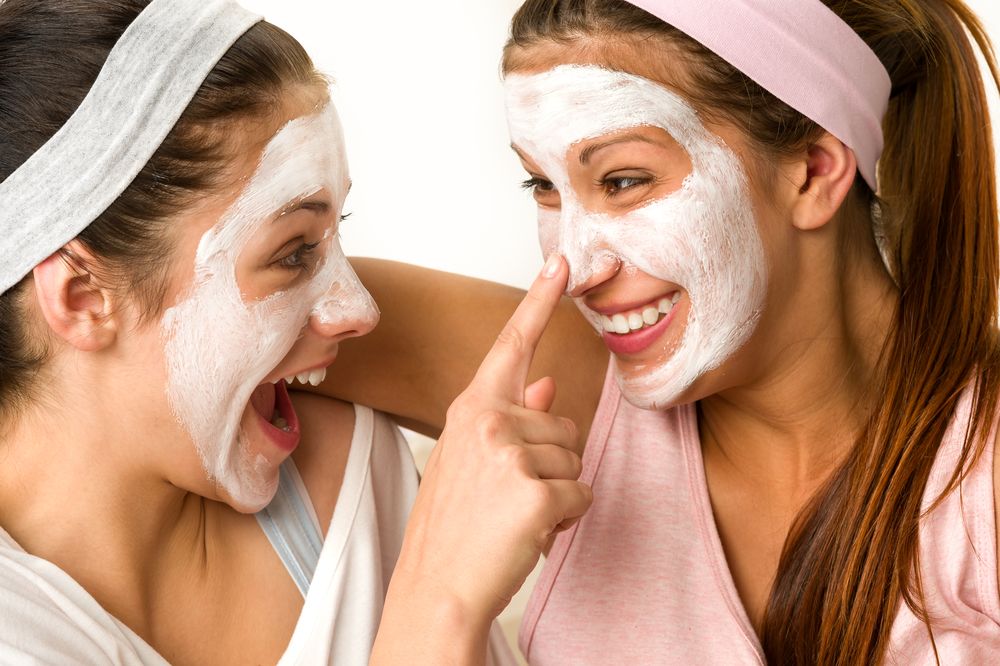
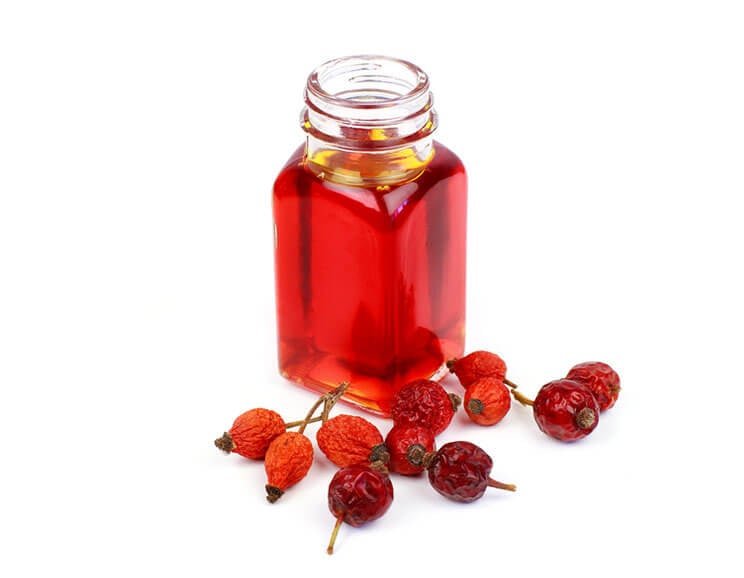
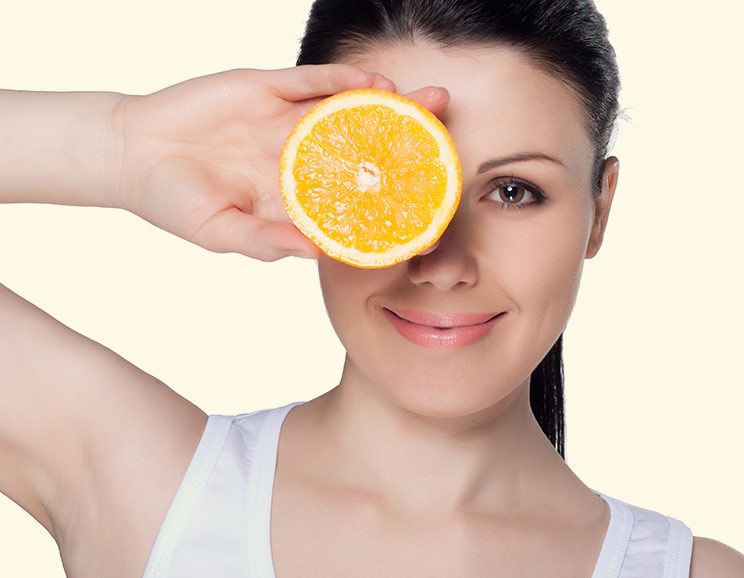
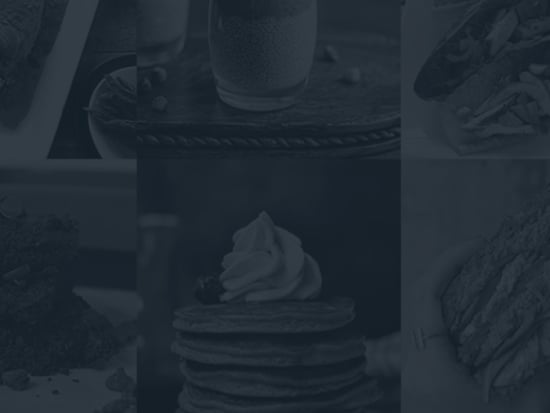
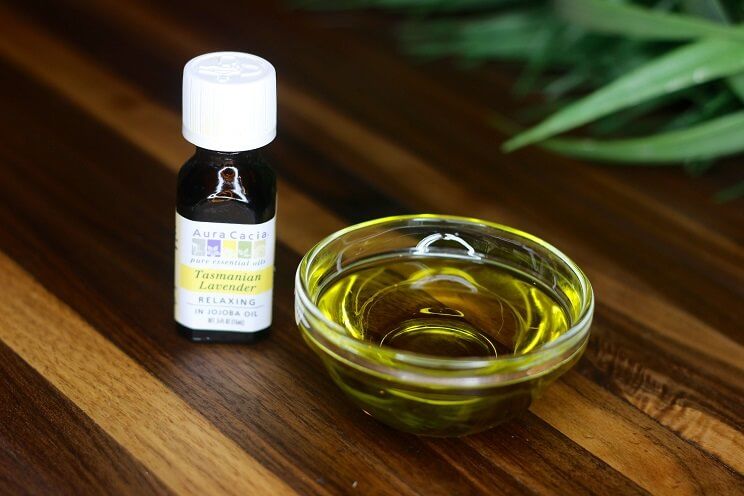
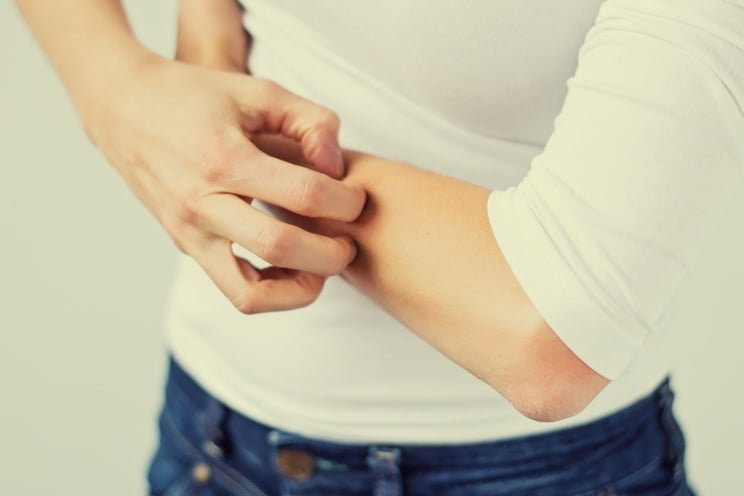
Show Comments